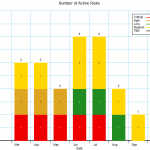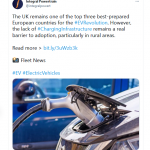Chicken or Egg

If you celebrated Easter, you will probably have received an egg. These days they are usually chocolate covered in bright foil which is a modern twist on the dyed and patterned eggs used for centuries.
This April 2021 newsletter looks at the age old argument of which came first the chicken or the egg. It is fairly straightforward in terms of the chocolate version! However, which comes first the requirement or the solution? Ideally we follow the sequence:
- User requirement elicitation,
- System requirements,
- Design / Solution,
- Validation/ Test
Real Life
However, we all recognise that doesn’t always happen. The important thing is we recognise when there is a constraint, and when the client is presenting a pre-formed solution because they believe that’s the answer.
Take for example a wind turbine operator who has a number of offshore facilities, which, when load is low, produce hydrogen by electrolysis at point of generation (minimising electrical transfer losses). If the client approaches with the requirement for a boat to bring the hydrogen ashore, there are two possible scenarios. They have not looked at the bigger picture – a pipeline may be more efficient, or they have investigated the alternatives and a vessel is what’s most practical. In the latter case the requirement is most definitely for a boat. However, if we are approached with a requirement for the boat to have a built in tank to transfer so many thousands of litres of liquid hydrogen, we may be in a different position.
Know Your Domain
If our industry expertise shows that the fitting of a number of individual standard transport container shaped hydrogen storage units could be better it should be discussed. We may be able to demonstrate the transport, over land to the nearest gas network connection point, would negate the need to build pipework to the docks. Here the user requirement has been unnecessarily limited by a proposed solution. We are in a strong position to help elicit the base requirement, and then provide a more appropriate system requirement for the vessel. Recognising that the customer has ‘built a solution into their requirement’ is part of our job to evaluate. In this instance we have a chicken (boat constraint) we’re just not sure of the breed (type of boat/tank arrangement) will need to be laid!
Left-shift
The earlier in the engineering process that these concepts can be discussed, perhaps presenting a range of options the better. Left shift of the process can prevent costly mistakes. Especially if you blindly implement the initial requirement without providing your industry expertise.
- Initial user requirement
- Preliminary suggested solutions and optional system requirements
- Revisit and further elicitation of user requirements
- System requirements based on agreed constraints and refined user requirements
- A design and solution that best solves the underlying problem
- Validation and test
Further reading about a related topic, functional and non-functional requirements, can be found in this article.
New Cradle Features
 We highlighted Risk Management and the new Cradle Risk Module in our March mailshot.
We highlighted Risk Management and the new Cradle Risk Module in our March mailshot.
We also noted how you can add formalised lists to Cradle items in our FAQ section.
Training Course
The next public training course is for requirements management in May – Public Online Training Course – Requirements Management May 2021. Book your place to avoid disappointment. These courses are open to all, if you want a course specific to your company or with tailored content please don’t hesitate to contact salesdetails@threesl.com
Social Media

We acknowledged the size of the ‘system’ when talking about a whole county’s EV infrastructure, in Integral Powerchain‘s tweet.
We hope you had a good St. Patrick’s Day, we noted the benefits of virtualisation. We were amazed at the very beginning of April by the advances in ‘Quantum Computation!!!’
Finally
That’s all for our April 2021 Newsletter, we hope you haven’t eaten too much chocolate!

